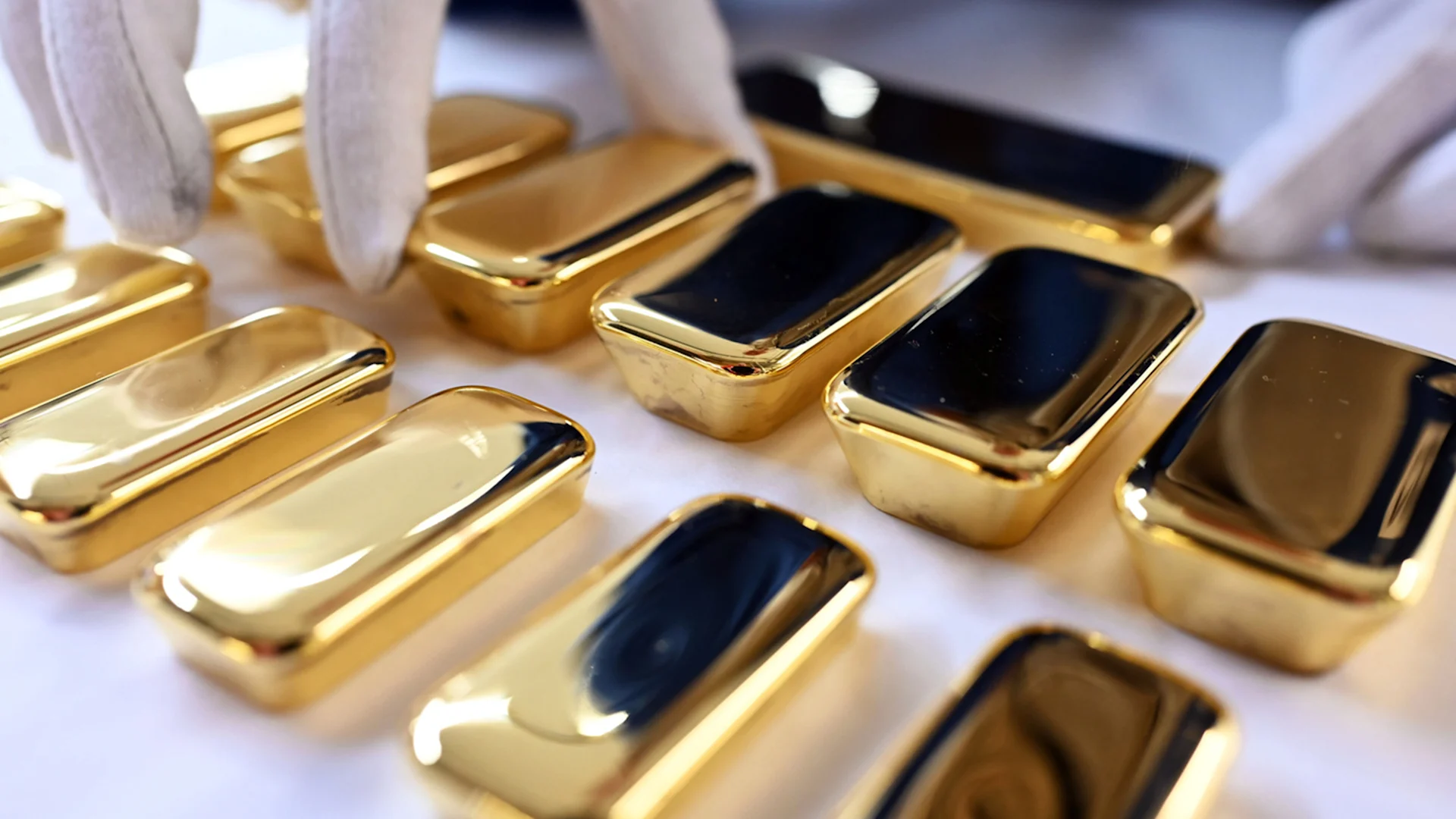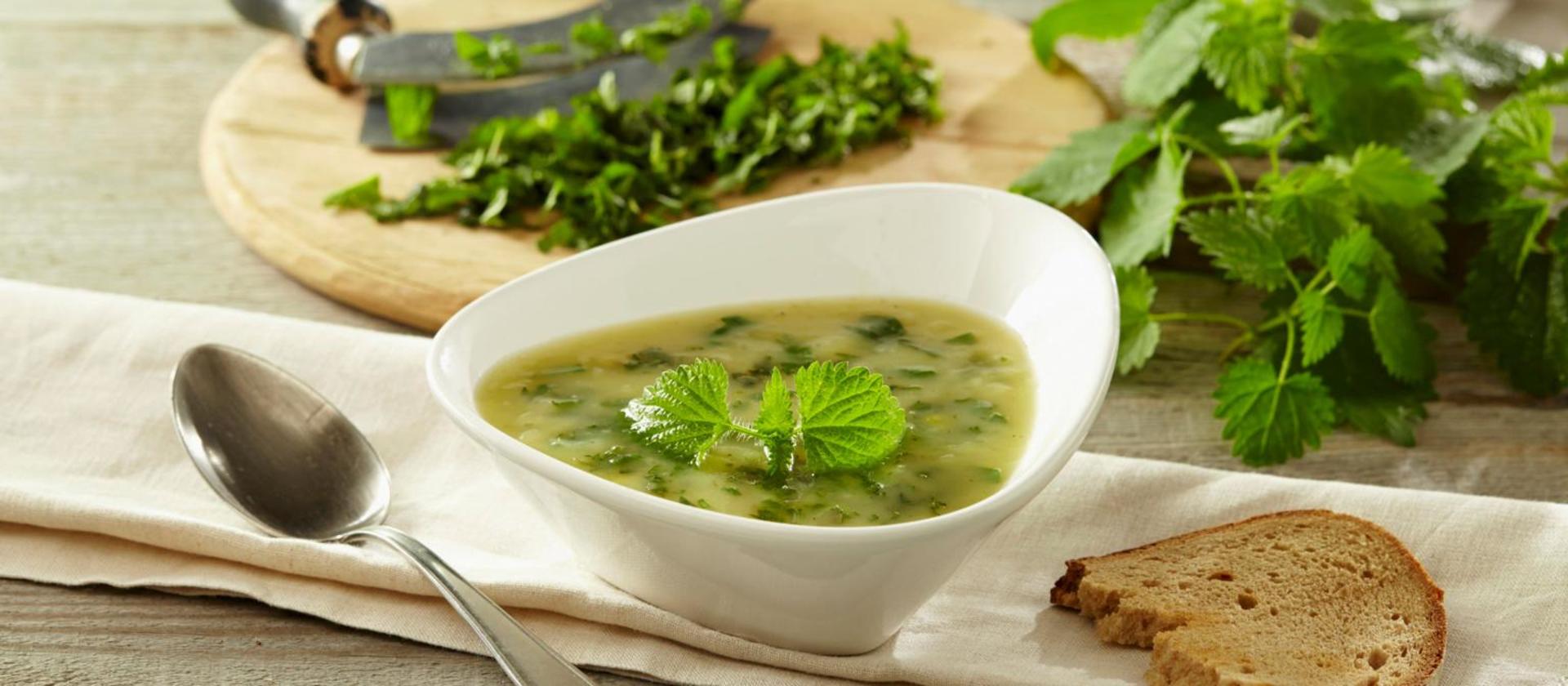
Migros Bank
What does 2026 have in store on the stock market?
If the AI bubble bursts, will the gold price rise even higher? Sacha Marienberg ventures a forecast for 2026.
navigation

Flowers & plants
Are all weeds bad? Not at all! How to gather wild herbs – and then use them to conjure up delicious dishes.
Spring is here – and plants are sprouting and growing everywhere. Unfortunately, so are the weeds. Unfortunately? “Nettles and other wild herbs are valuable sources of nutrients”, says Andrea Fürer. She works at the Migros Club School, where she teaches students the basics of gathering wild herbs.
It all starts by choosing the right place. “The best place to start is right on your own doorstep, as that’s where you know your way around”, says Fürer, adding that it’s important to stay away from dog-walking paths and any areas treated with pesticides. This means you can be sure the herbs on your plate are of exceptionally high quality and free from contaminants.
It’s best to keep an eye on the gathering area throughout the year. “There are spots waiting to be discovered everywhere. Even the walk to the train station becomes an adventure.” Last but not least, you can harvest wild herbs from your own garden instead of uprooting them or flattening them with the lawnmower.
Fürer recommends using a basket or jute bag to gather herbs. “You should only pick what you know. And don’t pick more than you need.” If you need only the leaves of a plant, only pick the leaves; if you want just the blossoms, leave the rest of the flower where it is.
Furthermore, you should only pick what you intend to use yourself – and leave no traces of your visit to the gathering site. Another important thing to remember: always ensure the plant survives – don’t simply pick everything you find!
After arriving back home, wash the leaves if necessary and then dry them in a salad spinner. Blossoms should be dabbed carefully. “If you’re planning to dry the herbs, you should pick them on a sunny day if possible – when it’s been a while since the last rain.” You can also preserve wild herbs – just like other herbs – either in the freezer or in salt.
When and where to find them: from spring to autumn, especially around the edges of woods or forests.
How to gather them: pick from the bottom up and grasp firmly – so the nettle hairs don’t sting as much. For complete protection, it’s advisable to wear gloves. Note that stinging nettles no longer sting once they’ve been cooked and pureed.
How to use them: like spinach. Wonderful in risotto or gratins, or as a soup. Can also be made into crisps by baking in the oven.
Pro tip: it’s also possible to gather nettle seeds from summer onwards. “They look like little nuts and can be eaten fresh”, explains Fürer. Alternatively, you can also roast or dry them and then use them as a topping for salads or muesli.
When and where to find them: all year round in wild meadows
How to gather them: large quantities of dandelions are a sign of over-fertilised meadows; therefore, it’s better to pick them from wild meadows that haven’t turned into a sea of yellow flowers.
How to use them: dandelion leaves – and their tender stems – are great in salads, while the flowers can be made into honey.
Pro tip: pick the flower buds before they’ve even opened. You can then either fry them in olive oil with salt and pepper and eat them straight away or pickle them in vinegar to make “dandelion capers”.
When and where to find them: from spring to autumn, when it’s not too hot, in recently mown meadows or in the garden.
How to gather them: pick only the flowers or harvest the whole flower – but without pulling out the roots.
How to use them: used raw, the edible flowers are a great addition to any salad or herby quark. You can also sprinkle them straight onto buttered bread or a sandwich. Fresh or dried daisies also make a good herbal tea.
Pro tip: pick the flowers while they’re still closed and use them to garnish soup. You’re in for a nice surprise, as the flowers open up in the warm soup.
When and where to find it: from April to May in deciduous forests.
How to gather it: you need to pick woodruff just before it flowers, as this is when it contains the most flavour. Cut off the top five centimetres of the plant and leave the stems to dry for around 12 hours. Woodruff only develops its full flavour when the leaves wither.
How to use it: this aromatic herb is particularly suitable for desserts. Woodruff pudding is one classic, but you can also make woodruff ice cream. It’s important to use woodruff sparingly, as the coumarins it contains can cause headaches.
Pro tip: woodruff is great for flavouring drinks. Add ten twigs to one litre of white wine and one finely chopped lemon. Leave to infuse for an hour and top up with a bottle of mineral water to make a refreshing punch. This herb is also suitable for making syrup.
When and where to find them: from March to June in damp meadows or mixed deciduous forests
How to gather them: cuckoo flowers are easy to recognise when their purple blossoms start glowing. They have a slight spiciness reminiscent of cress. Experienced gatherers recognise this herb before it flowers and pick its delicate leaves.
How to use them: these pretty flowers will lend any dip that certain something. This herb also gives home-made herb butter or salad dressings an extra little kick.
Pro tip: cuckoo flower seeds ripen by late summer and can be used – fresh or dried – as a pepper substitute.
When and where to find it: from March to September around the edges of forests or woods, or in your own garden.
How to gather it: goutweed, or ground elder, is often seen as the gardener’s nemesis – once it’s there, it’s hard to get rid of. The only solution is to eat it! The leaves taste particularly good in March and April, when they are still very young, and can be recognised by their bright green colour.
How to use it: as an alternative to parsley in salads, or chopped up in smoothies or pesto. Goutweed can also be gathered in large quantities and then used like spinach – lightly steamed or in a quiche. Older leaves can be used as seasoning.
Pro tip: beware, as goutweed has some poisonous relatives! One important distinguishing feature is the triangular leaf stalk, which is easily recognisable by rolling it back and forth between your fingers.
After arriving back home, wash the leaves if necessary and then dry them in a salad spinner. Blossoms should be dabbed carefully. “If you’re planning to dry the herbs, you should pick them on a sunny day if possible – when it’s been a while since the last rain.”